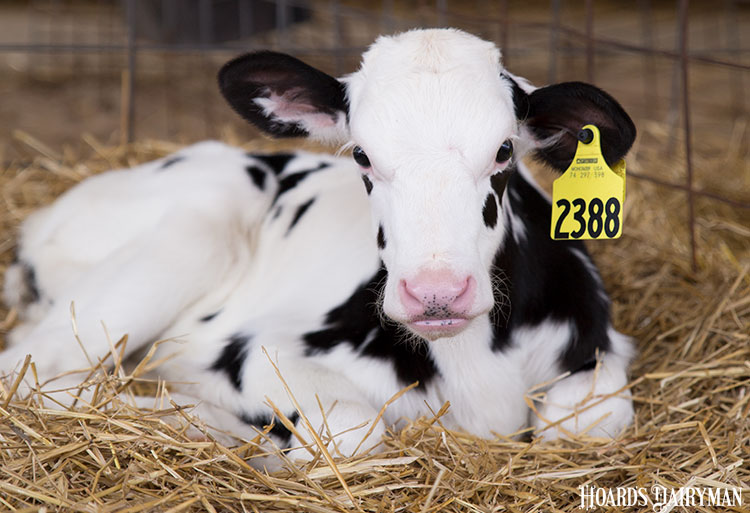
Getting calves off to a good start includes a nutritional program that encourages weight gain at a young age.
“I want calves gaining weight by the second week of life,” said Bob James, a professor emeritus at Virginia Tech University and owner of Down Home Heifer Solutions, his dairy consulting business. He shared factors that can help farms reach the target during the 2022 Professional Dairy Producers of Wisconsin (PDPW) Business Conference.
A calf nutrition program should meet a calf’s nutrient requirements for maintenance and growth and help them achieve their genetic potential for growth. James shared that maintenance requirements are higher for calves than cows by proportion of body weight, and he reminded that in colder weather, it takes more nutrients for a calf to simply meet maintenance requirements. If calves are limit fed, he said there is nothing left for growth.
James explained that calves don’t eat very much starter the first few weeks of life, no matter what a farm does to encourage intake. That means the bulk of nutrients must come from the liquid diet.
Whole milk has higher fat and protein levels, and James said it is more nutritionally complete. “The challenge,” he stated, “is you need to maintain quality from the cow’s teat to that calf’s mouth.”
Through this process, there are many places where “the wheels can fall off the wagon,” he said. “You must be passionate about maintaining quality.”
In most cases, James said the milk should be pasteurized prior to feeding. The necessary equipment and labor needed to get that job done should be factored into the cost of feeding waste milk.
James said that some farmers feed waste milk because they have enough of it and they feel it is a free nutrient source. “It’s not free,” James countered. “It costs you to make every pound of waste milk.” He added that if a farm has enough waste milk to feed all the calves, another problem likely exists and warrants a discussion with the herd’s veterinarian.
If feeding milk replacer, James encouraged producers to buy a quality product. “When you open that bag, you want to know what you are getting,” he said.
A benefit of milk replacer is its simplicity to use. James does recommend that farms weigh the powder and the water so that the meals are consistent every day.
Both milk and milk replacer have pros and cons, and James emphasized, “There are no absolutes here.” He recommended each farm look at their situation and costs per pound of weight gain to determine which option is a better fit.
For the calf program in general, James encouraged farms to meet the nutrient requirements for all weeks of age by providing quality ingredients. He said to aim for low morbidity and mortality during the calfhood.
For housing, “Implement a facility that optimizes labor efficiency and effectiveness. That is an investment,” James said. He also advised farms to develop a management mindset for calf care and to collect the needed data to do this. In the end, he said the objective is to have happy people and happy calves that grow well.








